#kalanos
Explore tagged Tumblr posts
Note
Can you tell us a little more about Kalanos? Did he actually exist and if so which stories about his interactions with ATG are likely real or fake?
Kalanos/Calanus
To those for whom the name is unfamiliar, he was an Indian yogi who attached himself to Alexander train somewhere in India, probably Taxila/Gandhāra. He famously immolated himself in Susa in 323, and (supposedly) prophesied Alexander’s own death months later by saying, “We’ll meet again in Babylon.” Whether or not he really said this a good question; I’m quite dubious. But he did certainly exist, although “Kalanos” wasn’t apparently his name (Plutarch says ‘Sphines’ which is still a Greekification, Alex. 65.3-4). What we know about him is kinda iffy, largely because the sources don’t agree. He came along willingly, at Alexander’s invitation, and Alexander reputedly treated him well with gifts he may have been somewhat bemused by and had little use for. Perhaps he genuinely thought he could teach Alexander something, I don’t know. But Alexander had a fascination with philosophers that was not entirely the invention of Plutarch, although I think Plutarch exaggerated it. (I've written on that before.)
Not a lot has been written academically about Kalanos, interestingly (although see below). In his somewhat recent Soldier, Priest and God, Fred Naiden spends some time on the reported contest between Alexander and the Indian philosophers, described in Plutarch (which IS probably 95% invented). Not sure I agree with his assessments, but I mention it, as Naiden does address ATG and the Indian yogis, but he had little to say about Kalanos himself and seems to accept the prophecy uncritically or at least as something Kalanos actually said, asking (no doubt rhetorically) what he meant by it. Well, I don’t think he said it, so what he meant by it would be whatever the original author (whoever that was) meant by it.
Other ATG biographers discuss Kalanos, and there may also be an article I don’t recall, in this or that collection. A lot have come out in the last 20 years, some of which I’ve simply not read, or I glanced through them, looking for material relating to my own work and that wasn’t it.
Kalanos is used by Curtius as a sort of totally-second-rate-Indian-philosopher-but-still-so-much-wiser-than-Alexander figure that’s part of Curtius’s general framing of Alexander’s latter years. He’s presented more positively in Arrian, Plutarch, and Diodoros (who confusingly calls him Karanos, which in other, later accounts was the supposed founder of Macedon—a completely different figure).
So, I think some good work could be done on Kalanos, academically, if someone wanted to take it up—particularly perhaps, someone able to read ancient Indian texts as well, and who could contextualize Kalanos better. For instance, Naiden suggests that he immolated himself because he felt he’d committed some sacrilege. I’m dubious. Then again, I’m just not that familiar with Brahminic traditions of that period. (Although see a different take in an article mentioned below.)
Kalanos’s manner of suicide went on to have interesting ramifications later in the Hellenistic/Roman periods. First, he wasn’t the only yogi to travel west, and immolation seems to have been a crowd draw and weird morbid-but-respectful fascination with the “Wow, they didn’t even flinch!” Consider the stories of Zarmanochegas. In any case, the story of Kalanos (and specifically his death) grew legs and pops up in a fair bit of later Roman-era writing.
I think we can lose sight of the fact Indian philosophy did have an impact in the west, maybe more than is sometimes acknowledged, and perhaps predating Alexander and Kalanos.
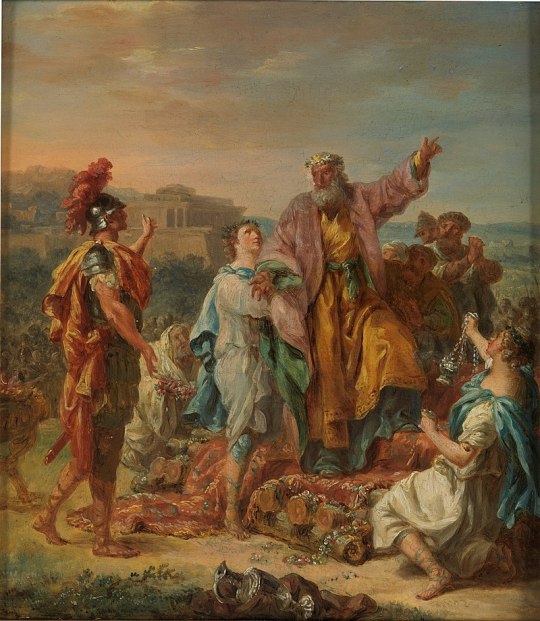
I found two articles that are at least somewhat recent and the first of which is the sort of real cultural dig I’d like to see more of: The Journal of the Oxford Centre for Buddhist Studies, “The Self-immolation of Kalanos and other Luminous Encounters Among Greeks and Indian Buddhists in the Hellenistic World” (Georgios T. Halkias), proposing that Kalanos may have been Buddhist, not a Hindu yogi at all. It looks quite interesting, with a solid bibliography, and is available publicly, so I will be downloading it for my own purposes. But as he’s not an Alexander scholar, so I’m not sure how the assessment of the Alexander sources will go. (This is the eternal problem when trying to combine two quite different fields of study. But I’m at least intrigued by the questions raised in the article abstract.)
The second was written by a George Bruseker with the British School at Athens, “Calanus and Dandamis: a Greek Sketch of Ancient Indian thought.” But the only journal Talanta I can find is for chemistry, so whether peer-reviewed or not, I’m skeptical about the article appearing there and not in something related to ancient history. Also, the bibliography is rather thin. For that reason, I’m not linking to it directly.
Again, I’ve not read either article, so I can’t speak further than very quick, first impressions.
#Kalanos#Calanus#Indian philosophy in the Greco-Roman World#Alexander the Great#Alexander the Great and philosophers#asks#Classics#ancient greece#ancient Rome#images of India in ancient Rome
11 notes
·
View notes
Text
Thinking about Kalanos... thinking about Kalanos and his self immolation... thinking about what it represents in the life of Alexander and how it affected him in the later part of his life... thinking about how it's emphasized in Arrian's Campaign of Alexander... as I often do.
#btw Arrian's Campaigns of Alexander is my favorite Alexander the Great biography#in case you were wondering#classics#alexander the great#kalanos#macedonia#ancient greece
3 notes
·
View notes
Video
KALANOS-ART-PINTURA-PAINTINGS-MIRADA INTERIOR-AUTOCONOCIMIENTO-VIDA SUPERIOR-ESPIRITU-AUTOINMOLACION-FILOSOFIA-PERSONAJES-ALEJANDRO MAGNO-PINTOR-ERNEST DESCALS VITAL- por Ernest Descals Por Flickr: KALANOS-ART-PINTURA-PAINTINGS-MIRADA INTERIOR-AUTOCONOCIMIENTO-VIDA SUPERIOR-ESPIRITU-AUTOINMOLACION-FILOSOFIA-VITAL-PERSONAJES-ALEJANDRO MAGNO-PINTOR-ERNEST DESCALS- Un hombre envuelto por las llamas de su propia autoinmolación, tradiciones orientales que algunos utilizan como modo extremo de purificación de su cuerpo terrenal con el fin de que el Espíritu pueda viajar libre de ataduras y ingresar en el Cielo de los Justos, aquella dimensión en que alcanzar la fusión con el Todo. La muerte del individuo no se contempla como un final, más bien como un nuevo principio. el filósofo y yogui hindú es uno de mis personajes preferidos en el amplio catálogo de personajes relacionados con el Rey macedonio ALEJANDRO MAGNO. muestra el encuentro de civilizaciones que pretendió el Conquistador de Macedonia y de como se pueden unir y conectar las distintas formas de vivir y de ver el mundo, su sacrificio fue voluntario y perseguía el Bien Superior, la Mirada Interior y la tranquila felicidad del que sabe hace lo que se tiene que hacer. Detalle de la pintura con acuarelas sobre la pira funeraria y el fuego que consume las imperfecciones. Expresión y ambiente en las obras del artista pintor Ernest Descals que forman la Colección de Arte acerca de la vida de Alejandro Magno.
#AUTOINMOLACION#PURIFICACION#ESPIRITU#MIRADA INTERIOR#VIAJE#TODO#FUSION#CIELO DE LOSJUSTOS#ESFERA#AUTOCONOCIMIENTO#LLAMAS#MUERTE#DEATH#HINDUES#FILOSOFOS#YOGUI#YOGUIS#INDIA#KALANOS#VIDA#LIFE#ALEJANDRO MAGNO#ALEXANDER THE GREAT#ALEXANDROS#BIEN SUPERIOR#ALMA#FELICIDAD#TRANQUILIDAD#SOUL#TRADICIONES ORIENTALES
0 notes
Text
Names generated from Hawaiian forenames/surnames and Chinese, Japanese cities
Adexiu Agotamakano Aguai Aidaizukura Aihanghuo Aileida Ailikiong Ainhela Akaaino Akamuro Akani Akauohende Alailan Alaizhong Aleiona Alele Alewameng Aliangpi Aliliongya Amenakawai Amiyan Angliizuma Ankotoyooma Anmishi Anoan Aokuwalei Aoleikitamu Araoda Arasakasuma Arasawa Aratsuba Asang Asangan Atsuzhou Awana Awang...
Baiuqiu Bamaba Bamini Barada Bayoka Beiyoule Binagong Buzui Chagao Chani Chekang Chentamele Chifa Chigi Chikodinei Chima Chimapawa Ching Chongxi Chonjin Chualohani Chuang Chuozhou Dabara Daizu Dakaliakura Danqino Dinchū Dongyua Ebibeo Ehelando Engolehu Eokomachi Ergui Evalang Fenda Fengling Fosuyawa Fujinjō Fujinzawa Fukai Fukamachi Fukasahon Fukasata Fukemani Fukonan Fukud Funama Futteng Gashiwa Gatsui Gatsusukuma Gotōmui Guang Guing Hagaweing Haidata Haili Haira Haize Hamoapang Hamotsukahu Hangji Hangni Hanjō Hanyaise Hanyunni Hanzhida Hasushua Haula Hauwa Hayang Helang Hendonjimo Hifeng Hililehou Himina Himotebo Hiraka Hitakyō Hiyaki Hiyosahe Honglinanji Hougashi Houlikia Houshimaki Huana Huani Huennu Huikalanxi Hunkoa Huozura Iagasoewa Ichen Ichita Ichua Ichōfudihe Igang Ikaali Imano Intokahou Iokushua Iokōri Ioleiang Ionggan Ionoyawa Isama Isugi Itakawa Itakelei Iyannōgan Izaki Izhou Izhoukannō Izukahe Izuwadong Jiani Jiantama Jiizuwale Jimanyan Jinano Jingshizhou Jiyong Kaang Kabizhoe Kaguanshuo Kagōri Kahaizu Kahen Kahene Kaheni Kahiga Kahinghui Kaibara Kaikusong Kailingkou Kaishio Kakatsusu Kalano Kaleia Kamaga Kaman Kamingliiza Kangde Kangleka Kaoyanika Kapunooku Karian Kashibushi Katoyo Katsu Kaukepina Kaukua Kauwakama Kawara Kazhougi Keakama Kealehuan Kekeau Kepinakara Ketamaui Kiahi Kimala Kiron Kitacang Koaka Koang Kokahani Kokeongua Komimai Kongqu Kuale Kuchizhou Kuguchea Kukima Kulani Kulau Kuras Kusagi Kushi Kuyama Kuyannang Kōrizuha Lamin Lehangzhou Leihuama Leijini Lengwu Leoka Liang Liani Linanzhori Linji Lohali Lohani Lohanuiha Loheng Luchizun Luokala Luoki Lushi Lusurakawa Luxing Mabeila Makou Maraki Maten Mehuan Meinzhi Meliang Menche Mengzhong Miakakanehu Miang Minakaingri Mining Minjō Minoe Misanchi Mitang Miyan Miyanji Mobanishira Mookura Morlan Muraichan Murenumani Mushi Nabuzhou Nagahang Nagameng Nagangfeno Nagoyino Nakiroi Nangdiangni Nangding Nanshima Nazhuani Nealanang Nezuo Niasatsu Nihuang Niizumi Nishuanni Nomina Obaimani Obeng Obinojō Ogate Ojiupi Okealohan Okubunkojō Okumehan Olikan Opele Owani Owuhong Palona Palua Panagong Panguchun Pauada Pauan Paulishi Paumana Pechao Piliu Pinoa Pizuoda Pohao Pukuma Qiangzhou Qinakada Qinamagawa Qinan Qiura Qiureyawa Quang Ritaika Ronbu Ruginoe Ruzeng Sahan Sahikawe Sakawa Sangoyoshai Saselinfeng Satang Satsu Sekamahou Setong Settodingyi Shana Shang Shanjiahi Shano Shaukangong Shewa Shiheng Shikou Shikuang Shinamura Shinanaki Shincaulu Shitoto Shiya Shonohou Sipohiokaui Soding Sukahoa Sukamatan Susanpizu Suyan Tabing Tacheshira Tachijino Tailan Tairatonao Taizhenghai Tajianzhoto Takalanyi Tamabara Tamae Tamai Tamasetsu Tanyami Taozhuang Tawazu Tiang Tianukaloi Toishimato Tokatsu Tonmishan Torianjiaku Toshi Tosuzunami Toyizumoa Tsugi Tsuka Tōgangding Ubaridorio Uhitamorla Ulang Ulangya Uluanihijō Umalinoa Unzhou Usukola Uweianzhou Waingshiwai Wakomi Wataru Wuania Wucha Wuganui Wuhou Wuhuangjina Wuzeng Wuzhimori Xiaka Xiala Xiananjiang Xiang Xianu Xiaokono Xiawani Xicanta Xinang Xingfang Xininara Xinou Xinxi Xinzawani Xualopo Yabinali Yamae Yamauma Yamiyoshise Yanakeala Yangshua Yannōgawa Yanweinzhou Yasanara Yichen Yishima Yizhenhui Yokuelan Yottsu Yuanjiiya Yufuchi Yuzukirobo Zakeo Zhara Zhebo Zhenri Zhokato Zhokupalo Zhoni Zhoroi Zhouda Zhuano Ōbayin Ōitagi Ōmanuhana Ōnanama Ōshina Ōtantosun Ōtsuku
1 note
·
View note
Text
God 101, Kalanos and Babylon
It was interesting how Alexander didn't come away from India with nothing Indian: he had a true yogi, Kalanos, with him, presumably as a guru. But the yogi got in a funeral pyre voluntarily and said he'd see Alexander in Babylon. In the context of "God 101", my song, maybe Alexander was so high stress, it was likely he'd have lifestyle issues, which totally connects to Swift's lewd lyrics.
0 notes
Text
MEMORIAS DE UN GUERRERO PERIPATÉTICO
Imagina a un joven combatiente, que sale a recuperar territorios que pertenecían al reinado de su padre, Filipo, cobijado por grandes guerreros que además fueron sus maestros.
Imagina ahora a un príncipe estudiante, de la mano del mismo Aristóteles, que le enseña a reflexionar e imaginar un mundo mejor.
Imagina ahora que ese joven guerrero no para de conquistar y va sembrando ciudades por doquier e imaginando cómo lograr que la gente viva mejor. Todo un peripatético, en honor a su ilustre maestro.
Si lo lograste imaginar, ya tienes en tu mente al gran Alejandro de Macedonia. Por ello, a continuación, te presento el resumen de una magistral obra de Mary Renault, enfermera, que vio por primera vez la luz en Londres en 1905 y fallecida en Ciudad del Cabo, a los 78 años.

EL MUCHACHO PERSA
Mary Renault
Editorial Grijalbo, 1972
Penguin Random House
426 páginas
28 capítulos.
Argumento
Vida de Alejandro Magno
Narrador:
Bagoas, un joven persa, aristócrata, capturado a los 5 años, castrado y vendido como esclavo a Datis, quien lo sodomizó desde los 12 años. Luego vendido a Dario III, rey de Persia.

Personajes, por orden de aparición:
Bagoas
Oromedón, instructor
Dario III
Artabazos
Doriskos
Bessos, el traidor
Nabazanes, el padrino
Alejandro
Hefaiston, su amigo de la infancia, también guerrero, general.
Bucéfalo
Perias (el perro)
Olimpia, la reina madre
Kleitos, uno de los dos generales de más confianza.
Filostrato, Filósofo y maestro de la corte
Kalistenes, cronista enviado de Aristóteles
Roxana, la esposa sogdiana
Los filósofos desnudos de Nyza, India.
El rey Poros derrotado, pero recompensado.
Kalanos, el pensador gurú indio que lo siguió hasta Babilonia.
Barsine-Estatira, hija del rey Darío III, segunda esposa.
Parysatis, hija del rey Artajerjes III.
Sitios de la narración:
- Susa
- Babilonia
- Persepolis
- Ecbatana
- Zadrakarta
Frases destacadas:
1. Fui educado en el honor, a montar, a utilizar las armas y a aborrecer las mentiras.
2. En casa me habían enseñado que, después de la cobardía y la mentira, la peor desgracia que podía acontecerle a un hombre era el comercio de si mismo.
3. El conocimiento puede alterar la memoria.
4. Lo cierto es que, a pesar de que el hombre sabio es consciente de que toda belleza nace para morir, a uno no le gusta que se le recuerden tales cosas.
5. Cuando mi sepulcro se abriera, me enfrentaría con un destino desconocido, como el niño encerrado en las entrañas de su madre.
6. En los llanos suele ser mejor el vino. Cuando el agua es mala el vino es bueno.
7. El polluelo vivo en el interior del cascarón no conoce ningún otro mundo. A través de las paredes del mismo observa una blancura pero no sabe que se trata de la luz. Y, sin embargo, golpea la blanca pared sin saber por qué. Un rayo le alcanza el corazón y el cascarón se abre. (Capítulo 11).

8. Tu vino es demasiado fuerte para beberlo con frecuencia, querido mío.
9. Un rey —decía el libro de Jenofonte en alguna parte— no sólo debe demostrar ser mejor que aquellos a quienes gobierna sino que debe arrojar sobre éstos una especie de hechizo.
10. No hay nada comparable a hacer feliz al que se ama.
11. Hay que vivir como si fuera para siempre y como si se pudiera morir en cualquier momento. Siempre las dos cosas a la vez.
12. En Macedonia cualquier hombre libre puede hablar cara a cara con su superior; cualquier superior u hombre libre puede hablar con el rey.
13. El fin y el objeto de la conquista, es evitar hacer lo mismo que los vencidos. Cuando conquistamos una región debemos demostrar ser mejores legisladores que aquellos a los que hemos vencido.
14. Al convivir con filósofos de la India, uno de ellos le responde: “A los hombres los has cambiado ciertamente. Por ti han conocido el miedo y la cólera, el orgullo y el deseo, las cadenas que apresarán sus almas a lo largo de muchas vidas. Y a ti, que te crees libre porque has dominado el temor y las codicias corporales, los deseos del espíritu te consumen como un fuego abrasador y pronto arderás en ellos.”
15. Otro de ellos le dijo” «Hasta los dioses se cansan de su divinidad y buscan alivio al final. Iré contigo hasta que seas liberado».
16. Ahora sólo vivía para avanzar hacia el Ganges, seguir su curso y alcanzar el Océano Circundante. Su imperio sería una obra acabada de mar a mar, coronada por una maravilla.
17. Alejandro siempre decía que todas las cosas buenas había que pagarlas.
Críticas al libro:
Triste y a la vez noble historia de un joven mancebo persa, de familia aristocrática, poblada de hechos históricos de la antigua Persia, la tierra del mismísimo Ciro y fecunda relación de las hazañas y del carácter de Alejandro.
Destaca en este bello libro la descripción del antiguo palacio imperial de Babilonia, con su alberca bañada de agua del mismo Éufrates, calentada por filtros de sol, de paredes de oro e incrustaciones de lapizlazuli, rodeado de finas plantas y sofás con cojines de lino.
Me gusto el episodio donde el muchacho persa se defiende de un depredador y con su agilidad utiliza su daga para deshacerse de él aunque no puede parar de acuchillarlo en el corazón repetidas veces hasta que escucha una voz que le dice que ya se detenga.
Sorprende como un hijo de la antigua Macedonia, sucesor de Filipo II, alumno de Aristóteles, destaque tanto en su espíritu guerrero, logrando expandir el pequeño reino de su padre al enorme territorio persa y hacia la parte norte de India, la extensión más grande jamás pensada, permitiendo difundir la cultura Helénica por los siguientes 300 años.
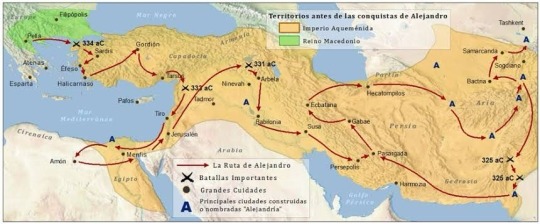
En la novela, Bagoas tiene 15 años cuando inicia su relación con Alejandro, que tenía unos 26. Renault describe la relación hasta su final, la muerte de Alejandro, cuando Bagoas tiene unos 22 años y Alejandro 33.
Sin duda es grato encontrar en el libro un buen espacio para Bucéfalo (su fiel corcel) y para Peritas (su fiel perro) lo cual transmite la nobleza de corazón de este controvertido hombre.
Otro pasaje hermoso, sin duda, es cuando Alejandro en una noche de pasión, presenta a Bagoas nada menos que el poema de la Iliada de Homero, lo cual es sin duda ninguna un gesto de alta sensibilidad de la escritora. Dicen que decía Alejandro, “Oh, qué afortunado el joven Aquiles, que encontró en Homero el heraldo de su gloria.”
Parece ser que Mary Renault elige también ser juglar de las hazañas de Alejandro y ayudar a cumplí su sueño de ser recordado para siempre.
La muerte de Clito el maestro de las artes militares del propio Alejandro, atravesado por la furia de una lanza, impregnada del rencor por haber sido recriminado por su creciente autocomparación con los dioses y su extremada orientalización y además impregnado del efecto del maldito alcohol en exceso, marca sin duda el inicio de su caída, en aquel fastuoso banquete de Samarcanda.
El regreso de la India a Persia, después del amotinamiento de sus tropas y la muerte de su amado Hefestion, trajo numerosas desilusiones (traiciones, robos, abusos) de sus supuestos hombres nobles agradecidos y nobles gobernantes, que seguramente hicieron sangrar su generoso espíritu. Percatarse de la fragilidad y la podredumbre humana nunca ha sido agradable.
Otro pasaje interesante es la presencia constante de la madre (la reina Olimpia) que desde su lejanía en Epiro Macedonia, parece actuar como la consciencia de Alejandro, llamándole la atención, guiándolo o recriminándole algo, a pesar de ser el Rey. Tal vez por eso Alejandro nunca volvió a su lado.
Conviene honrar la memoria y recordar que Aristóteles nació en el año 384 a.C., quien a diferencia de Sócrates o Platón, no era ateniense, sino que era de una región del norte, era un macedonio. El futuro filósofo nació en un pueblo llamado Estagira y su padre era el médico de la corte de Filipo II, Rey de Macedonia. Si bien que fue formado en Atenas desde los 17 años, en la Academia del mismo Platón, después de 20 años de formación regresa a Macedonia donde realiza numerosos estudios de Biología y se encarga oficialmente de ser el tutor por 5 años del joven heredero al reino de Macedonia: Alejandro Magno. En el año 335 a.C. volvió a Atenas para fundar su propia escuela, el Liceo, que se conviritió en competencia directa de la Academia de Platón. La escuela se conocerá como peripatética y a sus estudiantes se les llamará peripatéticos.
Grata paradoja da la vida, porque el mismo Alejandro fue un peripatético que meditaba entre batalla y batalla y sobre todo tras las batallas. La mayor enseñanza de Aristóteles era que el conocimiento se aprende a través de la experiencia, una materia que bien aprendió el joven conquistador. Tal vez sus numerosas Alejandrías eran un tributo a su antiguo maestro de quien nunca se olvidó, ya que después de cada batalla enviaba colecciones de flora y fauna para que continuara sus estudios.
En los días antes de morir tenía fiebre persistente, respiración acelerada y áspera, dolor del mismo costado de la herida de la flecha Malí, luego tos, sangre y debilidad. Un cuadro que parece una triste Neumonía, como recordándole la vida que los no dioses mueren como lo hacen los hombres, como simples mortales.

Y al día siguiente de su último suspiro, llegaron los encargados, lo trataron como a un rey, lo embalsamaron como a un gran soberano, un semidiós. Era el 13 de junio del 323 A.C., a sus 33 años, y lo cubrieron de mirra.
Resumido para ti por: El Búho Literato
0 notes
Text
Kalano Queypo as Bato

Kalani Queypo is an American actor best known for his role as Chacrow on “Jamestown” (2017-2019) and Klah Jackson on “Fear the Walking Dead” (2017).
59 notes
·
View notes
Text
"
Nie wiadomo czemu Moja głowa wraca do Chwili kiedy wpajano mi bzdury Nimi kalano
Kiedy była biada, bo Wstawała zjawa, o! Tylko moja sprawa to Tutaj co mi wpada w nos
Jeden wielki paradoks Niby z dala od zażywania Tego to, posypana ta cała noc Las Vegas to parano
Nie pomoże panadol Na te bóle głowy, potrzebuje ciszy Papa to, parasol Ochrony nie daje mi bo padają duże deszcze
Toksyny powodują na ciele Te miłe dreszcze Jeszcze! Jeszcze! W słowniku nie ma (nie chcę!) Po uszy zakochany w tej kochanej białej ścieżce"
7 notes
·
View notes
Photo


Drew one of my spore creatures that made it to the space stage in different styles called the Nyoomana, first one is more realistic/spec evo inspired while the other is more faithful to the in game spore creation but takes inspiration from the invader zim art style. More info under the cut.
Although I must say that the spec evo design is not the most efficient or as probable as I could have made it..I took a lot of inspiration from Spinosaurus and other prehistory critters as well as studying semi aquatic fauna from today (including the recently discovered ‘sea wolves’ who live on a diet of 25% fish)
It was difficult for me to imagine a social semi aquatic omnivore that could comfortably slip into either sea or land without sacrificing the prominent design traits of the Nyoomana in the game, so some realism did need to be sacrificed in order to keep it recognizable. Maybe I’ll do a design that skews more toward realism, but I think its fine as it is for now. I’m still rather new to spec evo as a whole, but researching this has been a fascinating and fun experience.
Heres what they look like in game ft. my captain ‘Kalano’

#spore game#spore galactic adventures#spore#moffy arts#spec bio#xenobiology#nyoomana#I don't imagine them being very large creatures#but still a force to be reckoned with
24 notes
·
View notes
Photo

Erymanthos : A mountain in Peloponnese, Greece. I was in a small village named Kalanos.
1 note
·
View note
Note
Do you think the historical Alexander could really admire someone like Diogenes?
Alexander and Diogenes
First, my apologies. I got swamped last week and didn’t have a chance to reply.
Short answer: Yes, I do. Apparently, so did a lot of people in the ancient world, who invented their meeting and then kept sharing it.
I doubt the infamous “Get out of my sun” incident ever happened. It’s a little too precious.
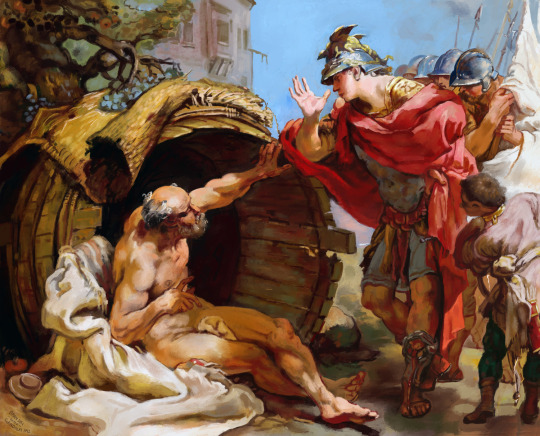
That said, I could see Alexander nursing a certain admiration for Diogenes, perhaps even trying to look him up. Of course, ATG was Aristotle’s student and later exchanged quite a number of letters with him. He also exchanged letters with Xenokrates (head of Plato’s Academy in Athens), Aristotle’s rival. Reputedly, while in Egypt, he also sought out “philosophers” (e.g., priests) while there. And he had his own pet gymnosophist from India, Kalanos. Plutarch makes much of his attraction to philosphy (and it’s Plutarch who recounts/made up the meeting with Diogenes), BUT it seems based on real interest. The debate with the Indian philosophers in Plutarch’s Alexander is almost surely invented, as is the Diogenes story. But the other stuff isn’t.
The reason I could see Alexander intrigued by/admiring of Diogenes is simply that Diogones said what he thought and didn’t kowtow. If he’d been a “mere commoner” doing that, Alexander wouldn’t have put up with it, but philosophers, even the Cynics, had high status. And Alexander wanted to be seen as an educated man.
On the off-chance the exchange actually did happen, or something close to it, What’s the best way to recover face after being “blown off”? To laugh about it, of course. (And to express admiration for the cheek.) It also helps that, at the time of the supposed encounter, ATG was still young, He may have lost some of his sense of humor as his sense of his own importance grew. 😉
Incidentally, while I don’t think the encounter actually happened, at least not as Plutarch tells it, I will include an encounter with Diogenes in book 3 of Dancing with the Lion.
Below is one of my favorite takes on the whole thing. Not only is it dogs, but a great pun on what “cynic” meanes: kunos…hound/dog.
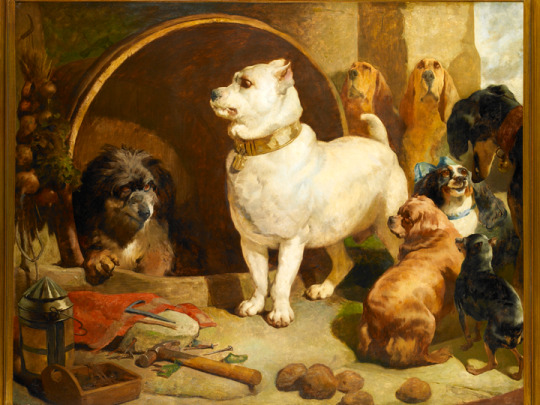
#asks#Alexander the Great#Diogenes#ancient Greece#ancient philosophy#Alexander the Great and philosophers#Classics#tagamemnon
43 notes
·
View notes
Photo
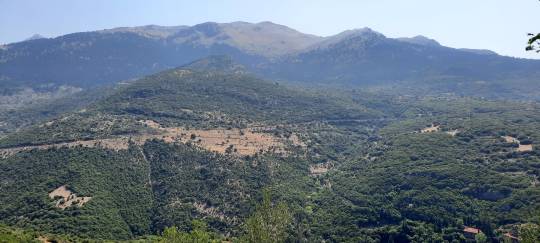
Erymanthos : A mountain in Peloponnese, Greece. I was in a small village named Kalanos. -- Book exotic trips like this on Travala! https://travala.com
1 note
·
View note
Video
KALANOS-ARTE-PINTURA-SACRIFICIO-PIRA-FUNERARIA-INMOLACION-FILOSOFO-INDIA-PERSONAJES-VIDA-ALEJANDRO MAGNO-ACUARELAS-PINTOR-ERNEST DESCALS- por Ernest Descals Por Flickr: KALANOS-ARTE-PINTURA-SACRIFICIO-PIRA-FUNERARIA-INMOLACION-FILOSOFO-INDIA-PERSONAJES-VIDA-ALEJANDRO MAGNO-ACUARELAS-PINTOR-ERNEST DESCALS- El filósofo hindú y yoghi de Taxila en la India, KALANOS quiso acompañar al Rey ALEJANDRO MAGNO en sus aventuras bélicas a través del Imperio Persa, peró llegó el día en que tuvo que decidir su propio sacrificio para conservar el equilibrio que lo conduciría a una vida superior, solicitó al Rey que le dejara libre para inmolarse en una pira funeraria, personajes de la vida del Conquistador de Macedonia con los que mantenía discusiones filosóficas y escuchaba sus sabios consejos. Pintura del artista pintor Ernest Descals con acuarelas sobre papel de 27 x 35 centímetros, poco a poco ampliando las obras de la Colección de Arte sobre Alejandro.
#KALANOS#SABIO#INDIA#FILOSOFO#YOGUI#HINDÚ#ART#ARTE#ARTWORK#SACRIFICIO#PIRA FUNERARIA#EQUILIBRIO#VIDA SUPERIOR#PERSONAJES#CHARACTERS#REY#KING#ALEJANDRO MAGNO#ALEXANDER THE GREAT#SAGE#FUEGO#FIRE#FUNERAL PYRE#INMOLACION#IMMOLATION#VIDA#LIFE#MACEDONIA#MACEDONIO#MACEDONIAN
0 notes
Photo

There is always a first. He founded India's first Pharma Company. What better to inspire as a startup? #NextBigApp #StartupIndia #Startup #Kalanos #Startup #InvestIndia #PCRAY #StartupStory #India #BengalChemicals (at Noida, India)
0 notes
Text
tongan and hawaiian names
Afeti Afolai Afulamana Afusia Ahame Ahelo Aholalo Ahoni Ahooka Ahuini Aihio Ainasia Akakia Akani Akano Akapu Akolena Akonite Akonohala Alaailala Alakio Alanohi Alanu Alaosimi Alauakeke Alavake Aleaua Alefonuki Aleinga Alotohi Amelehi Anakaina Anofea Anuele Anuitoa Apani Apuna Arani Asifi Auihu Auimale Aukulei Aulau Aumoi Auvailau Auwanga Awalia Awiwala Bokeakana Bokelia Ehuboys Elane Elani Elealei Elepeleau Emahau Emani Ematane Emiku Eohanga Eolana Ewalefone Faahokai Faila Fakahua Fakaitusi Fakalea Fakalo Fanoha Fatua Felaa Felia Fetiolio Fetuaili Filaikina Filanita Filia Filii Foloheaua Fonamau Fonoe Fonoke Fothea Fukai Fuluana Fulutu Fusia Hakalohia Hakeau Haleiki Hanga Havaiki Heakahou Healini Heanani Hoewaili Hokuala Holii Holohea Hookahea Hookupo Hoopeloha Hoopomu Hopoutu Houna Huahelani Huana Huinia Hulupuamu Ihalanesi Ihikiko Ikapani Ikapi Ikelisimi Ikila Ililea Ilina Imotua Iokalohau Iutaikaai Ivainalei Ivaka Iwiwia Iwiwo Kaamaka Kaami Kaaseikau Kaaunia Kahelia Kahili Kahoanau Kahoepili Kahopole Kahou Kaiami Kaiamoa Kailia Kaioana Kaisi Kaisimau Kaiwo Kakaaea Kalai Kalanake Kalanane Kalania Kalano Kaleimomi Kalesami Kalii Kalila Kalina Kaloa Kalohe Kalona Kaloni Kalopau Kalotukou Kalou Kamau Kamelu Kamoela Kamoriti Kamotui Kamotusi Kanahi Kanale Kanano Kanga Kangi Kaniaiki Kapale Kapaua Kapuai Kapulana Katiki Katioa Kaufakea Kaufuna Kauma Kaumahi Kauwanika Kavai Kavakoani Kawani Kawea Kaweawano Kawia Keakee Kealau Kealo Keama Keanala Keauwe Kefunu Kekaheala Kekei Kekeo Kekoni Kelai Keleine Kelepola Kelia Kemaha Kemakahi Kemika Keoke Ketekatoa Kiala Kikamena Kikani Kinaniki Kinga Kivaia Kivela Kivilia Koakiaki Koapaolu Koate Kofakai Kofoto Kololia Kongaholi Kongi Kotupoa Kuaili Kuakea Kuamatea Kuelena Kueli Kukupi Kulangalo Kulani Kumaha Kuoheala Lanealea Lanuki Lapua Lataupo Lavei Leakepo Lealemi Lealolani Leikani Leiki Leikonoha Leinihi Lelei Lenila Leokani Liamahua Likalakai Lililii Limaale Lisela Loane Lohalei Loheau Lotuamehu Lotuufulu Lukahi Maaioewa Maapua Maawai Maeauki Maeni Mafili Mahelehu Mahuihi Maieneau Maikali Maikona Maikuela Maini Maisesi Maiti Makahoo Makai Makaikeo Makalane Makapu Makeoni Makiai Makina Malaki Malangi Malaulala Malava Maleolo Malialomu Maloa Malutuani Manale Maniu Mapeau Marele Matanga Matei Matena Mauliselu Mausikina Melango Melealini Minui Miolia Moakoi Mokulii Molakalu Momikala Momimai Mooka Mookea Motoa Motomi Motui Nakamilau Nakio Nales Nalimoa Nameni Napumo Nasia Nofataufa Nohunahea Nokona Okolohele Okulo Olapau Olativaka Olionoaka Oliwiwo Olohi Omilikana Opeleli Opeliwai Openealia Openi Oseki Otoliika Otukelele Otuna Pakahale Pakinalu Palea Paleia Palia Palilipua Panaikila Patano Patoa Patokalu Pauakali Pawailii Pekelu Pelani Pelene Pelia Penae Penia Penoa Petotu Pilatupo Pileia Pileini Pilia Pohane Pohani Ponani Ponoa Pulaneta Pulei Pulua Pumali Puuohane Rosikaiau Rosiuaona Sakamale Sanga Sauani Sealokoa Seawalu Seina Seinakawe Seinoha Selanamu Siete Sikauve Sovala Tailani Tapulavi Tauhi Tauna Telane Tenalani Teoliwi Tevemei Tokahukoa Tokanana Tomipuu Tonani Topikihi Topua Torita Tuafinale Tuani Tuialehi Tuihapa Tukaaumoi Tulanani Tulavi Tuluna Tupona Uafilita Ualani Uhekoi Ulanai Ulekekala Ulelelau Uliposova Ulualo Ulukamio Umala Unaikala Unakeo Unameleia Vaielea Vaino Vaipouna Vakeaweha Vakosi Valani Valauna Valionga Vavai Vavakoa Veilila Veinana Vemea Vikalani Viliaka Wahuboys Walane Walohau Wiakeke
0 notes






